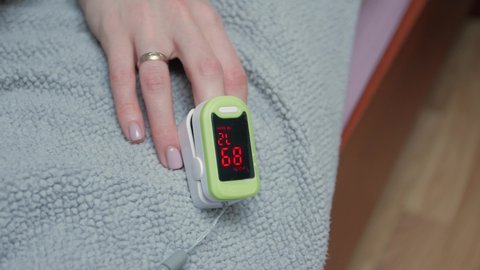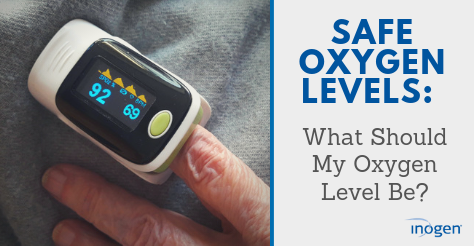91 Oxygen Level
- According to Dr. Fred Furgang in his article “Hypoxia, Oxygen, and Pulse Oximetry,” a pilot should use supplemental oxygen if the oximeter reading is below 90%, maintain at 91-92% level when doing remedial tasks and above 93% with an increased workload.
- Pulse oximetry is measured in percentages: 95 to 100 percent is considered normal for a healthy individual, and anything below 90 percent is abnormally low. ABG is measured in millimeters of mercury. A range of 80 to 100 mmHg is considered normal for arterial blood gases in a healthy individual. Causes and Symptoms of Low Blood Oxygen.

Normal Oxygen Level in Blood. For most people, an oxygen level of 95-100% is considered to be normal. When the level of oxygen is within this range, it is considered to be optimum for smooth functioning of the cells. A level that is below 95% is a cause for concern and warrants an examination or testing by a medical personnel.
Overview
What is hypoxemia?
Hypoxemia occurs when levels of oxygen in the blood are lower than normal. If blood oxygen levels are too low, your body may not work properly.
Blood carries oxygen to the cells throughout your body to keep them healthy. Hypoxemia can cause mild problems such as headaches and shortness of breath. In severe cases, it can interfere with heart and brain function. Hypoxemia that causes low oxygen levels in your body’s tissues is called hypoxia. Sometimes people use the two terms interchangeably, but they are not the same thing.
Symptoms and Causes
What causes hypoxemia?
A variety of conditions and circumstances can interfere with the body’s ability to deliver normal levels of oxygen to the blood. Some of the most common causes of hypoxemia include:
- Heart conditions, including heart defects
- Lung conditions such as asthma, emphysema, and bronchitis
- Locations of high altitudes, where oxygen in the air is lower
- Strong pain medications or other problems that slow breathing
- Sleep apnea (impaired breathing during sleep)
- Inflammation or scarring of the lung tissue (as in pulmonary fibrosis)
What are the symptoms of hypoxemia?
Symptoms of hypoxemia vary depending on the severity of the condition. They include:
- Shortness of breath
- Fast heartbeat
- Coughing
- Confusion
- Bluish color in skin, fingernails, and lips
Diagnosis and Tests
How do doctors diagnose hypoxemia?
To diagnose hypoxemia, your doctor will do a physical examination to listen to your heart and lungs. Abnormalities in these organs can be a sign of low blood oxygen. Your doctor may also check to see if your skin, lips, or fingernails look bluish.
Doctors use tests to check your oxygen levels, including:
- Pulse oximetry: A sensor that slips over your finger measures the amount of oxygen in your blood. Pulse oximetry is painless and noninvasive. Many doctors use it routinely each time you visit.
- Arterial blood gas test: A needle is used to take a blood sample from your artery to measure the levels of oxygen in your blood.
- Other breathing tests: These might involve breathing into tubes that are connected to computers or other machines.
Management and Treatment
How do doctors treat hypoxemia?
Treatment for hypoxemia aims to raise the levels of oxygen in the blood. Doctors can use medications to treat underlying conditions that cause hypoxemia. These medications are often given through an inhaler that enables you to breathe the medicine into your lungs.
In more severe cases, your doctor may prescribe oxygen therapy. People typically receive extra oxygen through a device called a cannula (tube) that is clipped to the outside of the nose, or through a breathing mask. The location and amount of time people receive oxygen therapy is based on individual needs. You may receive oxygen at home, with a portable machine while you travel, or in the hospital.

What are the complications or side effects of hypoxemia?
If your blood does not have enough oxygen, it cannot deliver enough oxygen to the organs and tissues that need it. This situation can be fatal if severe in the short term and can affect the heart or brain if it persists over a long period of time.
Prevention
Can hypoxemia be prevented?
There are steps you can take to prevent hypoxemia from returning after treatment. To increase the oxygen levels in your blood, your doctor may recommend:
- Deep breathing exercises
- Mild exercise such as walking or yoga
- Eating a healthy diet
- Drinking plenty of water
- Quitting smoking
Outlook / Prognosis
What is the outlook for people with hypoxemia?
Hypoxemia symptoms can go away with treatment. Depending on the cause, people with hypoxemia may require treatment once or on an ongoing basis. Your doctor will work with you to manage the condition so you can live an active, healthy life.
Living With
When should I call a doctor regarding hypoxemia?
Contact your doctor if you experience symptoms of hypoxemia. Early diagnosis and treatment can help ensure the condition does not get worse and cause dangerous complications.
Normal and Abnormal Blood Oxygen Levels During Sleep
Low sleep apnea oxygen level is a sign that your treatment for sleep apnea is not effective.
Patients with breathing problems during sleep (sleep apnea, COPD) often have low oxygen levels in their blood.
Keep in mind that anything below 90% oxygen level is dangerous to your body and require intervention. Another thing to consider is that the brain can only survive 4 minutes once oxygen is completely cut off.
In this page you'll learn:
- What should your oxygen level be during sleep,
- How sleep apnea affects the oxygen levels in your blood,
- How oxygen levels affect your body,
- The link between pregnancy and low oxygen levels in obese women,
- How to monitor oxygen saturation levels,
- What is the best finger oximeter to monitor blood oxygen levels,
- How to treat sleep apnea oxygen level.
Oxygen Levels During Sleep Apnea
In sleep, the upper airway muscle tone of the patients with sleep apnea tends to narrow and collapses temporarily. When this happens, the breathing stops accompanied by a drop in blood oxygen levels and arousal from sleep.
The low oxygen levels during sleep can make you feel very tired in the morning and will contribute to more restless sleep.
Furthermore, when the oxygen levels start to drop, the carbon dioxide levels build up in your blood. This can lead to morning headaches, fatigue and sleepiness during the day.
Scientific Proofs - Oxygen Levels Decreases During Apneas
Even the most recent studies (2012) demonstrates the link between sleep apnea and oxygen desaturation. That's why the oximeter is an important tool in clinical assessment.
With a finger pulse oximeter you can monitor yourself to see how effective is CPAP (you'll learn how to do this bellow). The device can also be used to diagnose sleep apnea, but only if you use a quality product.
For more information on how to use an oximeter to diagnose sleep apnea, read the portable pulse oximeter article.
How Does Sleep Apnea Oxygen Level Affect the Body?
Any value of blood oxygen level bellow 92% is abnormal. However, the number of desaturations and the time spent with abnormal oxygen levels is important.
For example, if you only desaturated below 92% once or twice during a 7 hour sleep, and the desaturation level lasted only a couple of seconds, it's not a reason for worry.
91% Oxygen Level
Your body will be seriously affected when you'll have long term low oxygen levels. This can lead to:
- heart rhythm problems,
- increasing pressure on the right side of the heart,
- fluid build up in the body,
- heart failure,
- stroke.
Increasing the pressure on the right side of the heart
The right side of the heart has the role of pumping blood through the lungs, which requires a much lower pressure.
A higher pressure can lead to severe fluid buildup in the body that can cause life-threatening shortness of breath, heart failure and even death.
Please call your doctor urgently if you experience chest pain or shortness of breath that is not relieved by rest.
Monitoring Your Blood Oxygen Levels
If your doctor discovers that your blood oxygen level (oxygen saturation) is less than about 90% during the day (when you are resting), then your oxygen levels are probably dropping during the night. This means that you have sleep apnea, or other respiratory disorders, like UARS.
What Is A Good Oxygen Saturation Level
Your doctor may recommend overnight monitoring of your oxygen levels using am oximeter. In a sleep study, you usually have the oximeter attached on the finger.

You can use a portable oxygen saturation monitor or oximeter, a cool little device that can record your sleep apnea oxygen level and pulse rate during sleep. A medical approved oximeter is truly a great tool to see how well CPAP is working for you.
A tip before buying an oximeter: you would do well to invest in a recording oximeter with software. You can upload your data in a computer, and you can go to your sleep specialist with the results.
See an example in the followingvideo:
For more info about sleep study for sleep apnea, see sleep studies.
So, if you have a low blood oxygen level, follow up with the sleep study as soon as possible.
Continued drops in O2 levels will cause damage to cognitive function, short term memory, stroke and heart attack in your sleep, and a host of other problems.
Oxygen Levels in Pregnant Women
Overweight women who are pregnant or women who gain too much weight during pregnancy are at a higher risk of developing sleep apnea. This can cause a drop in blodd oxygen levels during sleep which can create complications for the baby.
So if you are overweight or gained a lot of weight during pregnancy, speak with your doctor to investigate if you have sleep apnea.
For more info about obesity, see sleep apnea and obesity.
Improving Sleep Apnea Oxygen Level
Patients with sleep apnea are usually treated with CPAP machines. If apnea episodes disappear, the oxygen levels will improve to normal levels.
How often should you use the CPAP?
If your doctor prescribed CPAP therapy, you should NEVER go a night EVER without a CPAP on or even take a nap without one.
More strategies to treat sleep apnea:
If your oxygen saturations drop significantly and persist during the night, you may benefit from overnight oxygen delivered by nasal masks or nasal prongs.
CPAP and Oxygen Levels During Sleep
You can have low oxygen levels during sleep even if you use the CPAP. This means that your CPAP doesn't have the desired effect.
That's why is important to monitor your oxygen and pulse rate.
To keep a better eye on your sleep apnea oxygen level you might consider purchasing a finger pulse oximeter.
Remember: don't use inferior equipment to measure your well-being and don't change anything without checking that information with a second opinion or proper equipment.
Sleep Apnea › Sleep Apnea Side Effects
 › Sleep Apnea Oxygen Level
› Sleep Apnea Oxygen Level